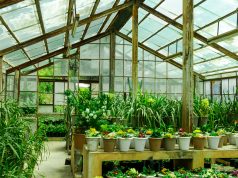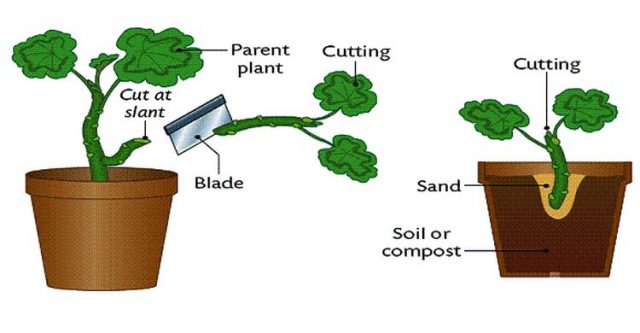
Totipotency is the ability of a living cell to express all of its genes to regenerate a whole new individual. Plants have this ability, and with that, it is possible to grow a garden without seeds.
Vegetative Propagation
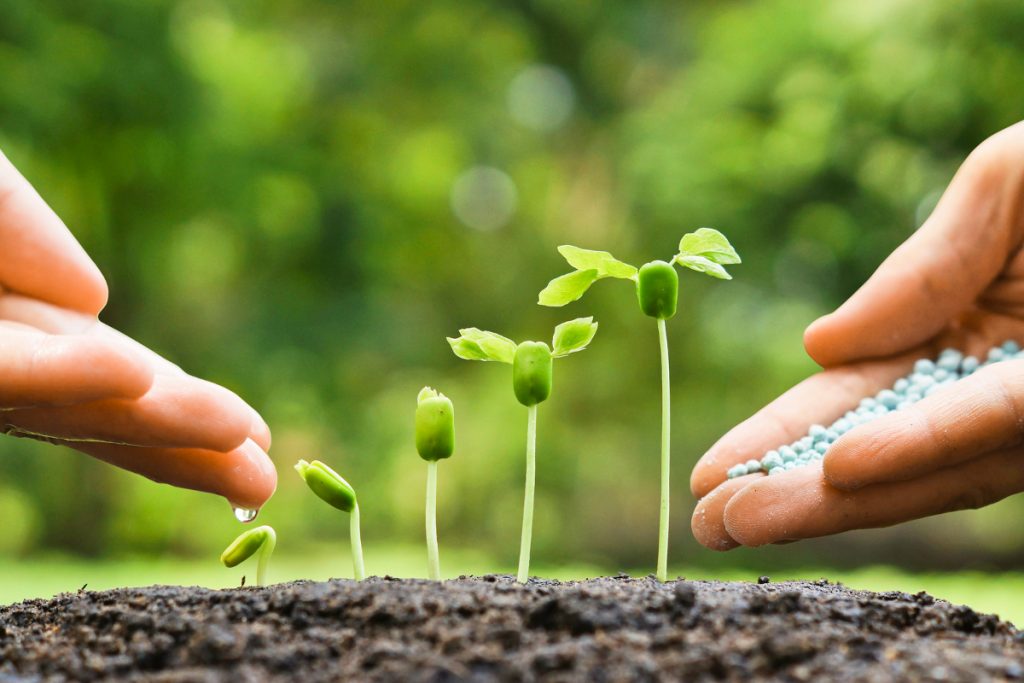
In school, we are taught that plants grow from seed. Flowering plants produce seed thanks to pollination. This propagation is se*ual. The totipotency would be an ase*ual propagation because new plants are created without pollen meeting an egg, and we call it vegetatively propagation. Here is what Joseph Tychonievich, author of Plant Breeding for the Home Gardener: How to create unique vegetables and flowers, says about vegetative propagation: „Because it allows you to make an exact copy of the parent plant, vegetative propagation enables growers to maintain distinct cultivars that would not come true from seed. It is useful because lots of plants—really most perennials and woody plants—don’t usually come true from seed, so if you sow seeds of your favorite apple, rose, daylily or coneflower, the resulting plants will look different from the plant you started with. Vegetative propagation allows you to preserve the attributes of the plant you like so much.“ Another good thing is that plants grow bigger and quicker than growing from seed, as Sandy Feather, a commercial horticulture educator with the Penn State Extension, part of the College of Agricultural Sciences at Pennsylvania State University in University Park, Pa, adds. We bring you 4 best ways to do this. Take a look.
1. Crown Division
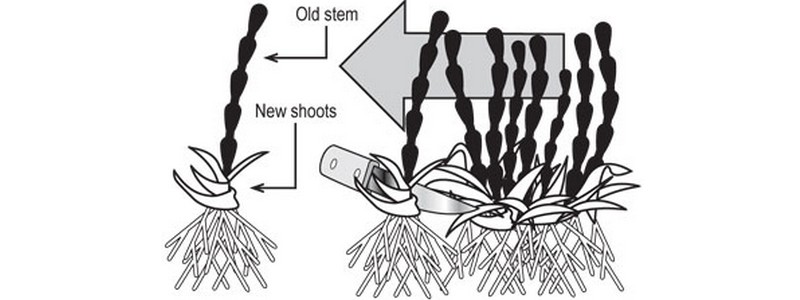
This is the simplest form of vegetative propagation and is very useful for any herbaceous plant that is clump-forming. The plant needs to be dug up and separated into pieces. In order to produce a new plant, each piece needs to contain a portion of the root system attached to a portion of the shoot system. The place where those two systems meet is called the crown of the plant, and that’s why we call this form the crown division. When flowering is reduced, you need to make a crown division. This shouldn’t be applied to plants with a long taproot or woody plants with the main trunk. The best time to do the crown division is when the plant is not in flower. The first thing you need to do when using this method is to dig up the entire plant leaving soil on the root, then divide its parts. Depending on the plant, you will be able to tear or teased apart the plant with fingers, cut out with a pair of scissors, or you will have to use a sharp shovel, a pruning saw, or a pick-ax. After you have done that, plant the viable divisions into a new home, or temporarily put them in a pot for later planting. It is important to keep the parts well-watered.
2. Layering
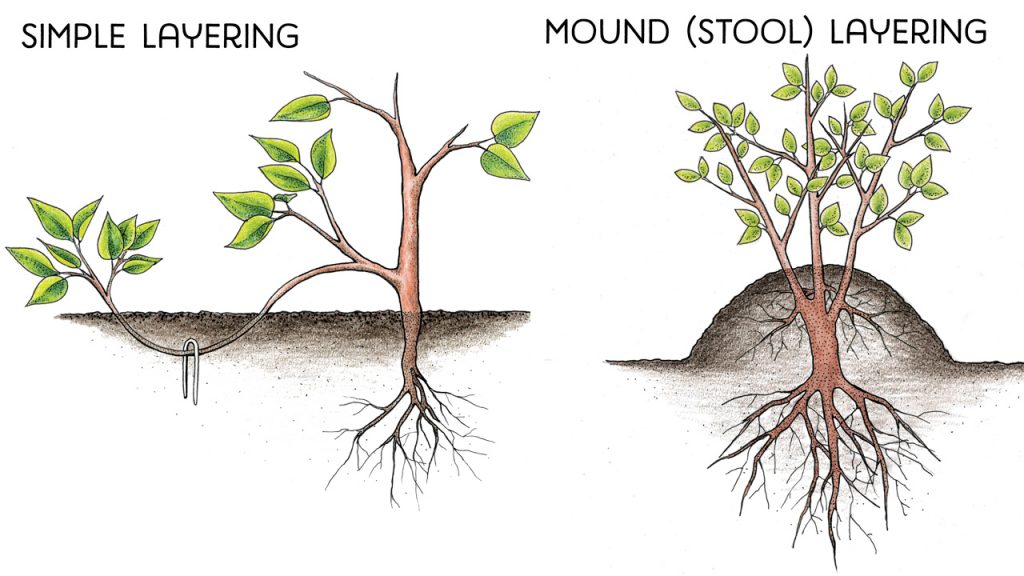
Feather says: „Simple layering is a very easy way to propagate plants vegetatively. Many plants do this naturally on their own, but we can also do it purposefully.“ During the layering, tips of arched branches meet the ground and root. This happens with and without human assistance. Feather adds: „Shrubs with flexible stems work best for layering. Azalea, forsythia, rhododendron, willows, climbing roses, spirea, and hydrangea are all great choices. I like simple layering because the new plant remains attached to the mother plant until it has developed a sufficient root system to survive on its own. They don’t require much care.“ This technique doesn’t require any special skill, all you need to do is bend a branch down to the ground or into a pot of soil, wound the bark with a sharp knife at the point of soil contact, dust some rooting hormone (available at your local garden-supply center) onto the wound to speed up root formation, and pin it down on the soil using a landscaping pin or even a brick. It usually takes a few months for roots to form, and when that happens, you can cut the plant from the mother plant, dug it out, and move to a new location. Spring would be the best time to use this technique.
3. Stem Cutting
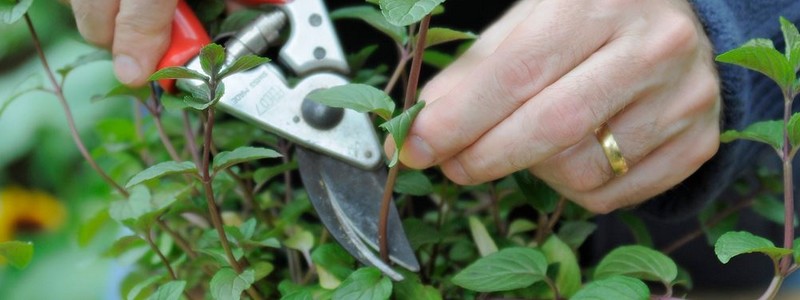
This technique requires a little bit of your time and attention. Stem cutting makes it easy for many herbs, houseplants, herbaceous annuals, and perennials, to propagate. It is done with a portion of the stem being removed from the mother plant and used to generate a new root system. Tychonievich explains: „With stem cuttings, the plant is in a race against time to grow new roots before the stem dries out. To grow these new roots, the specialized cells making up the various parts of the stem have to dedifferentiate into generic plant cells which can then turn into new root cells. Rooting hormone speeds up that process, but keeping the cuttings cool, moist and exposed to the right amount of light keeps them from drying out while they are growing their new root system.“ You will need a pair of scissors, a bag of sterile potting mix, a container of rooting hormone, a handful of clear plastic baggies, and twist-ties. Put potting mix in every pot, and cut off a few 2-to-3-inch-long stem pieces with two growth nodes. Place the rooting hormone on the bottom inch of every stem, and then put it in the pot. You will need to place each individual potted cutting into a clear plastic baggie with the opening at the top. Close the baggies with a twist-tie to keep humidity high. Feather says: „Remove the lower leaves before inserting the cutting into the growing medium, but maintain the leaves on the top because they will provide the energy needed to grow new roots. When inserting the cuttings, it’s important to maintain the proper orientation: up-end up, down-end down. The cutting will not grow if you stick the wrong end into the growing medium.“ Make sure your covered pots are near lots of light. Water the pots once in a while. When you water them, make sure you remove the bag and allow them to drain before you put them back inside the bag. When you see yellow leaves or rot off, remove them. Before you fertilize the cuttings, they need to be firmly rooted. Any herbaceous annual and perennial, including geraniums, coleus, impatiens, begonias, tomatoes, lantana, angelonia, bee balm, asters, and clematis can be propagated by stem cuttings. Same goes for shrubs, including viburnums, hydrangeas, weigela, hollies, and winter berries.
4. Leaf Cutting
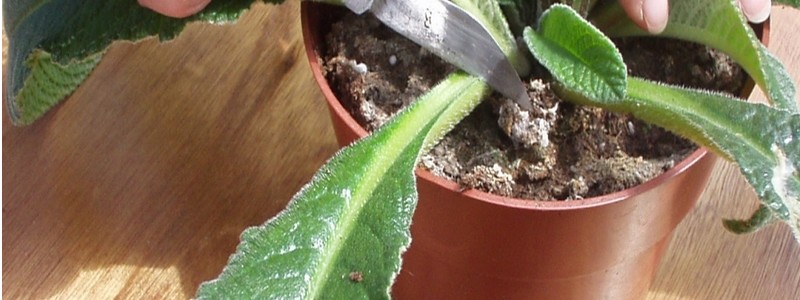
When using leaf cuttings, the plant needs both a new root system and new shoot system to be generated. In order to grow a new plant, leaf cuttings use a single leaf or a part of a leaf. It is important to say that this technique doesn’t work on many plants, and it requires more work than stem cuttings. Plants with succulent leaves, including sedums, kalanchoes, certain cacti, African violets, and begonias, are the best to grow with this technique. First, you need to remove a single leaf with a clean, sharp knife. Then simply dip the petiole (leaf stem) into rooting hormone and then insert the leaf into a pot filled with sterile potting mix. As it was previously said, you can cut out a wedge or circle of leaf tissue, which may or may not include the petiole, and do the dipping and inserting with it, instead of with a whole leaf. Just like with stem cutting, you will need to cover the cuttings with a plastic baggie, or a humidity dome, and water it regularly. Dozens of little plants can grow from a single leaf, and it will take a few weeks for them to grow. This might be the coolest technique so far.
These vegetative propagations show us that you can grow a plant with minimal cost and effort. Nature is truly magical.



